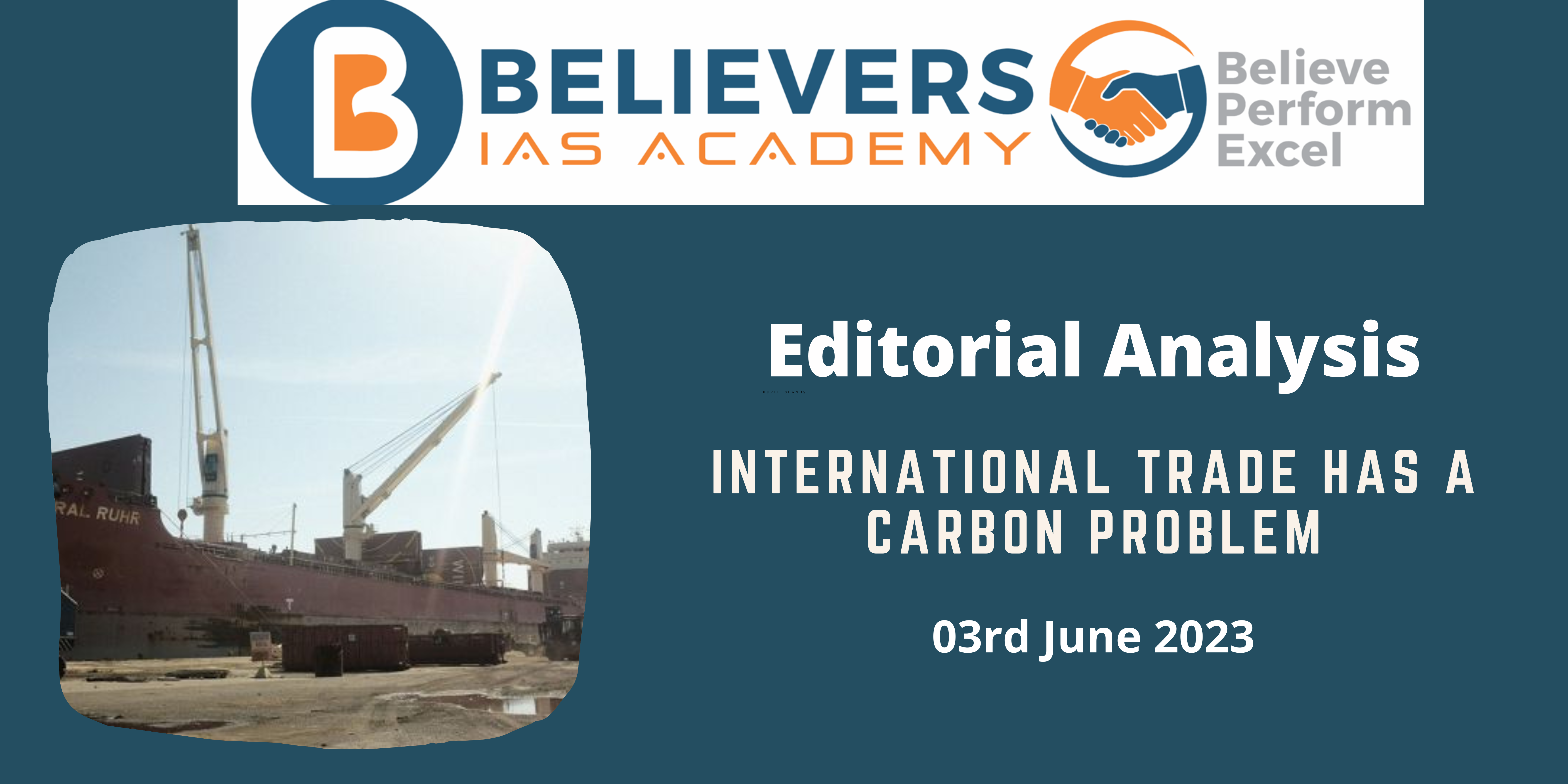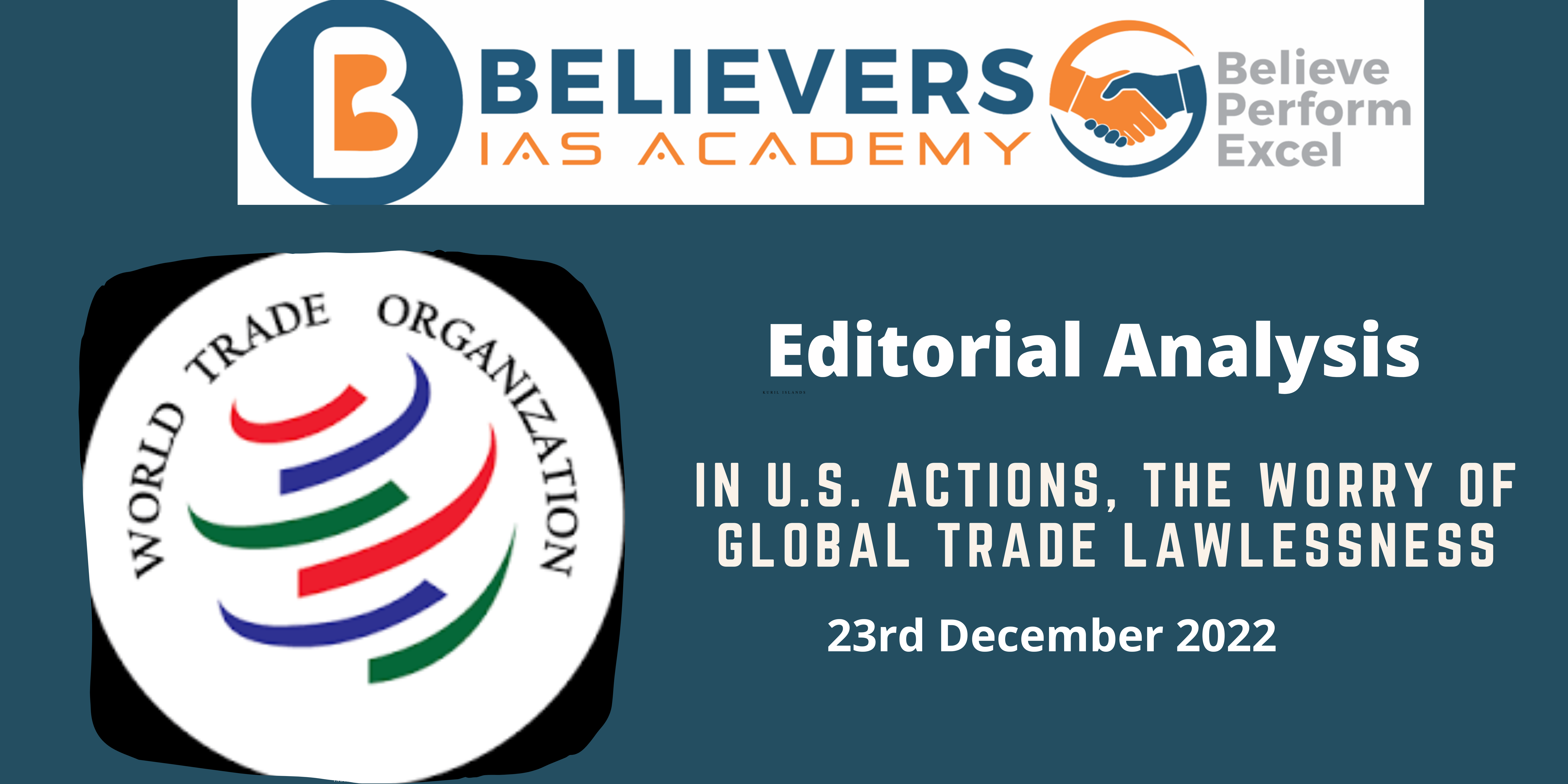International Trade Has A Carbon Problem
Context :
India worries that CBAM will make it impossible for it to export carbon-intensive goods to the EU. India has reportedly denounced CBAM as being protectionist and discriminatory, even though its exports to the EU are barely 1.8% of its overall exports and are limited to steel, iron, and aluminium.
carbon tax 
- With the help of a price, often in the form of a CO2 price emitted, a carbon tax is a measure that captures the external costs of Green House Gas (GHG) emissions—costs of emissions that the general public bears. Crop damage, medical expenses related to heat waves and droughts, and property losses due to flooding and sea level rise are only a few of the external costs of emissions.
- Due to the lack of pricing for natural resources like air and forests, environmental damage has resulted in carbon emissions that have contributed to climate change.
- To solve this problem, nations must come to an agreement on how much they value nature and how much they should charge for carbon emissions, starting with the G-20’s largest economies.
- The three means of pricing carbon include the implementation of a national carbon tax, as in Korea and Singapore, the use of an emissions trading system (ETS), as in China and the European Union (EU), and the application of an import tariff on the carbon content, as the EU is proposing.
- The cost of carbon is only $6 per tonne on average across 46 countries, which is a pittance compared to the projected harm from pollution. The IMF has recommended price limitations of $75, $50, and $25 per tonne of carbon dioxide for the US, China, and India, respectively. According to them, this may lead to a 23% drop in global pollution by the year 2030.
Points to Ponder:
- India’s Worries and CBAM:
-
-
- A significant climate law, the CBAM, was enacted by the EU with the goals of lowering greenhouse gas (GHG) emissions and levelling the playing field for EU enterprises.
- India is worried that the CBAM will hurt its exports to the EU of carbon-intensive goods including aluminium, iron, and steel.
- Even though these products only make up 1.8% of all of India’s exports to the EU, India views the CBAM as discriminatory and protectionist.
-
- Objective and mission of CBAM
-
-
- The EU’s Emissions Trading System (ETS) is a market-based mechanism to lower domestic GHG emissions, which is the goal and objective of CBAM.
- The EU is concerned that imported goods would not be subject to comparable emissions prices, which would hurt EU industries.
- With CBAM, this problem will be solved by making certain carbon-intensive imports pay the same economic costs as EU producers under the ETS.
-
- WTO consistency and non-discrimination:
-
-
- Non-discrimination is supported as a core value by the World Trade Organisation (WTO), which is consistent with this position.
- Although CBAM’s architecture may seem origin-neutral, its use may discriminate against different products due to differential carbon price schemes or reporting demands.
- The issue of whether the CBAM-eligible products are “like” one another and if the non-discrimination principle is in effect arises.
- Historically, the WTO has not taken production differences into account.
-
- Justification under WTO regulations:
-
-
- If a measure is covered under the General Exceptions section of the General Agreement on Tariffs and Trade (GATT), then WTO regulations permit it to violate regulations.
- The “conservation of exhaustible natural resources” is one of the identified policy justifications in GATT Article XX, which might be used to support CBAM.
- The chapeau of Article XX, which prohibits discrimination between nations with the same conditions, is another requirement that CBAM must meet.
- Critics claim that CBAM may violate the Chapeau criterion since it only takes into account explicit carbon prices and ignores implicit costs incurred by products from certain nations.
-
- India-EU free trade agreement negotiations:
-
- Negotiations for a free trade agreement between India and the EU are still going on, and CBAM has grown to be a key sticking point.
- To allay its worries and achieve advantageous terms for Indian exporters in connection to the CBAM, India should cooperate with the EU.
- India could also think about contesting the CBAM at the WTO to guarantee a just and impartial decision.
Similar Topics:
Carbon Border Adjustment Mechanism





